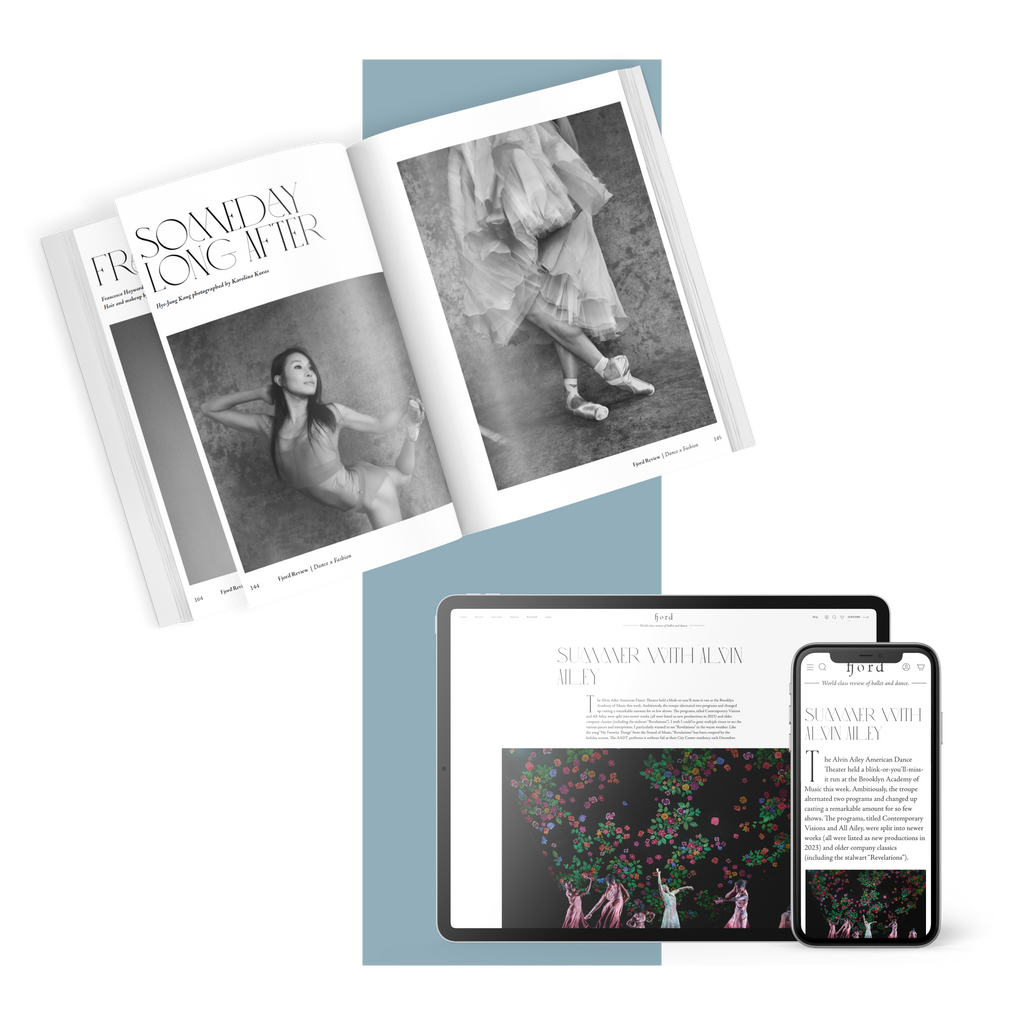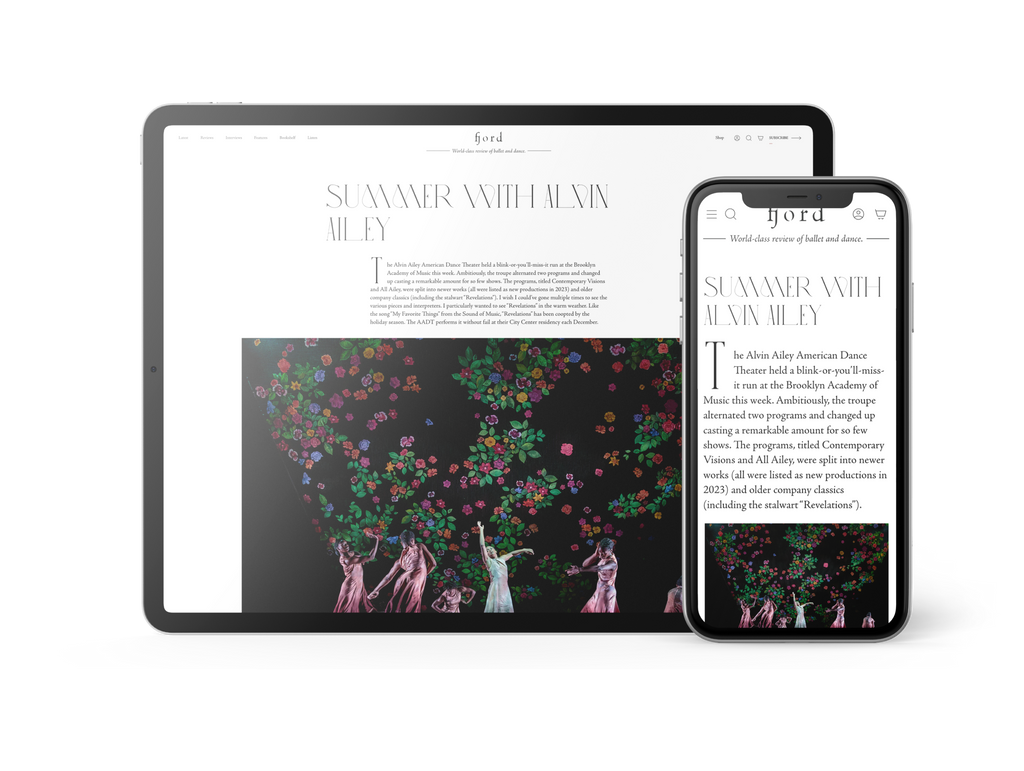Spellbound
Two performers crawl in on hands and knees wearing neon green, hooded coveralls—the lightweight papery kind made for working in a sterile environment—and clusters of balloons pinned to their backs.
Continua a leggere
World-class review of ballet and dance.
Mystic, vibrant, violent, feminist—Akram Khan’s newest work is all this and more. The hour-long piece stars Khan himself alongside Ching-Ying Chien and Christine Joy Ritter, and takes its inspiration from Karthika Naïr’s 2015 collection of poems Until the Lions, a reinterpretation of the Mahabharata, the ancient Sanskrit epic. This postmodern narrative layering—in which mythology is reframed through a modern literary lens and then channeled through a prism of contemporary dance, itself informed, in this case, by kathak tradition—lends a rich complexity to the work, one that’s felt in many aspects, from the stratified music to the mosaic sequencing.
Performance
Place
Words

Akram Khan and Ching-Ying Chien in “Until the Lions.” Photograph by Jean Louis Fernandez


“Uncommonly intelligent, substantial coverage.”
Your weekly source for world-class dance reviews, interviews, articles, and more.
Already a paid subscriber? Login
Two performers crawl in on hands and knees wearing neon green, hooded coveralls—the lightweight papery kind made for working in a sterile environment—and clusters of balloons pinned to their backs.
Continua a leggereWill Rawls makes boundaries visible by defying them. Known for the disciplinary and topical range of his projects, the choreographer, director, and performer approaches issues of representation in “[siccer],” a multi-part, multi-site work co-presented by L’Alliance New York’s Crossing the Line Festival. A live performance at Performance Space New York accompanies a multimedia installation at the Kitchen, a book published by Wendy’s Subway, and an album published by the artist. With a creative process reaching back to 2018, the work delves explicitly into pandemic-era energies and inertias with focused intimacy and a pervasive sense of instability.
Continua a leggereIt is always interesting when multiple theme steps emerge over the course of a mixed repertory evening, but it is uncanny on one featuring five different ballets, each with a different choreographer and composer, covering a twenty-year span (2005-2025).
Continua a leggereZvidance premiered its new work “Dandelion” mid-November at New York Live Arts. Founded by Zvi Gotheiner in 1989, Zvidance has been a steady presence in the New York contemporary dance scene, a reliable source of compositional integrity, and a magnet for wonderful dancers.
Continua a leggere
comments